How to Choose a Living Room Rug - Characteristics to Consider
By Editorial Team
Updated on February 12, 2025
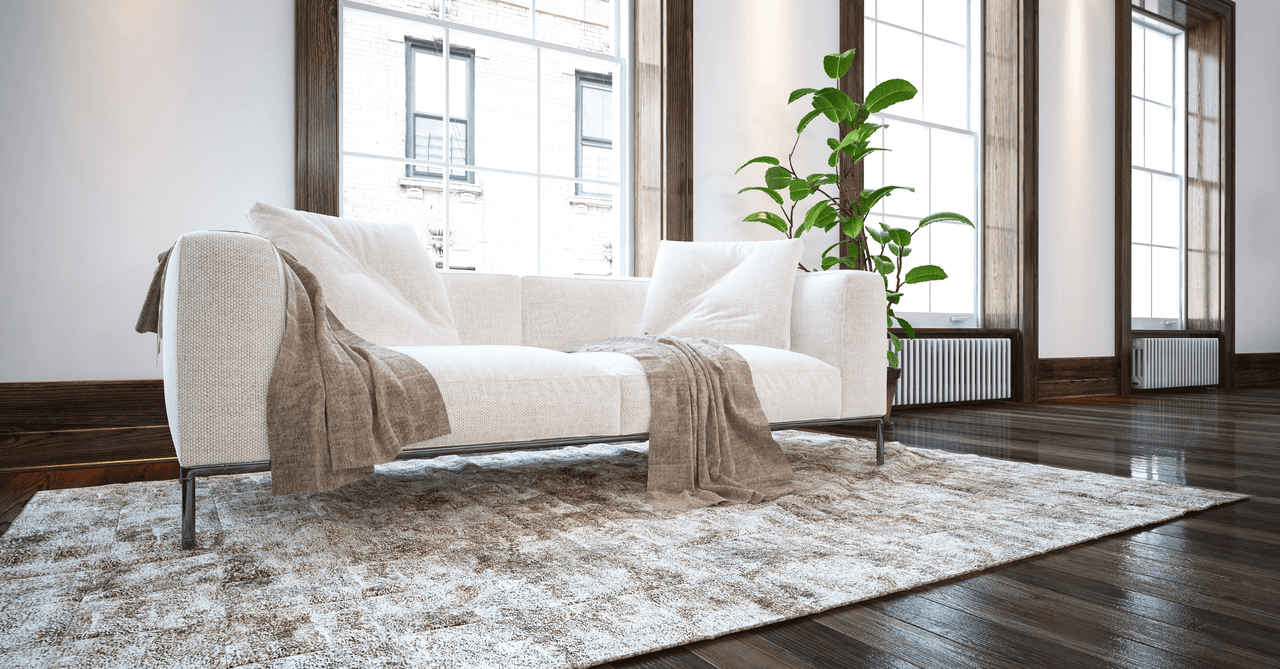
Area rugs and carpets add flair to any room. In a living room, they provide both comfort and a cozy vibe, complementing the decor and furniture. In open-concept or oversized spaces, area rugs define individual spaces within a larger one. In smaller rooms, they trick the eye, making the space appear more spacious than it actually is.
How can you use a carpet to delineate zones in an open-plan room or visually extend a small space? What are the key tips and tricks for choosing the perfect rug size, pattern, and colour to transform your living room into an inviting space?
To achieve a stunning effect with an area rug, it’s essential to understand the tricks of the trade that make all the difference - so keep reading!
How to Choose the Perfect Rug for a Modern Living Room: Shape, Material, and Colour
Picking out an area rug or carpet means ensuring it matches the colours accented in the room in question, sets off the furniture, blends with the decor, or transforms the space altogether. The possibilities are nearly endless, provided you know what look you’re going for and how to achieve it.
What Is the Best Material for an Area Rug?
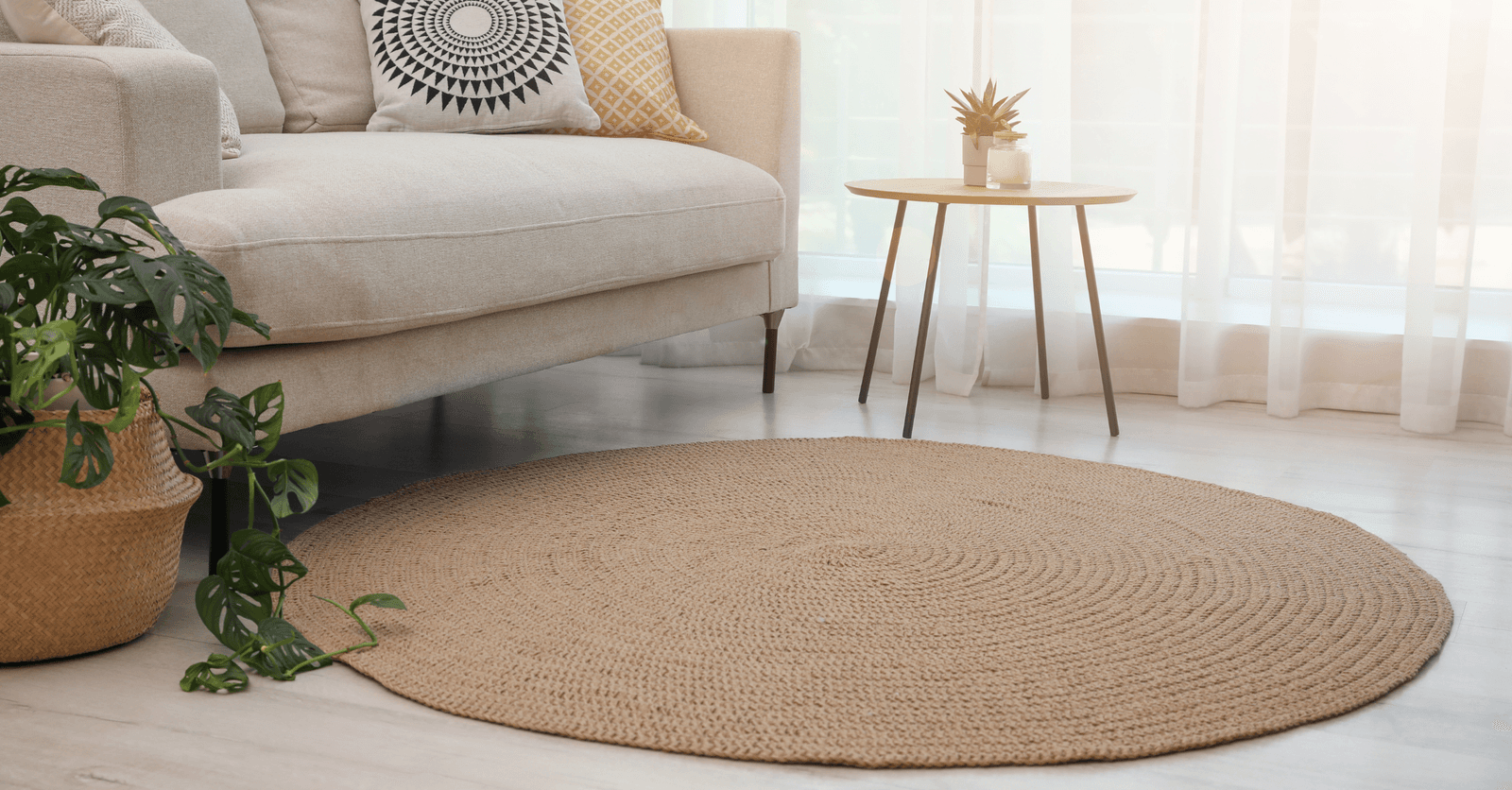
Source: Canva
Rug material should never be overlooked. The selected material will influence the style conveyed in the living room, but also the rug’s longevity and wear and tear, not to mention its care and maintenance particularities.
Natural or Synthetic Materials?
Nothing short of elegant, natural materials (wool, cotton, silk, sisal, jute, leather) are ideal to boost the feeling of comfort instilled in a living room. Most homeowners cherish the thermal and acoustic insulation provided by wool, cotton’s moisture resistance and absorption capacity, leather’s sheer elegance… We can go on!
Synthetic materials (polyester, nylon, polypropylene, viscose) are perfect for modern and stylish decors. Often retailed at affordable price points, synthetic rugs are resilient and low maintenance, withstanding high foot traffic. That said, they’re a great option for heavily frequented rooms, best for family homes with young children.
Woven Rugs
These rugs are made by weaving, which is the interlacing of warp and weft threads of material. This manufacturing method will not only influence its look and style but also its resilience and durability. Below are listed the main types of weaving:
Hand-knotted: The carpet fibres are knotted on a canvas much like is done with Persian rugs.
Crocheted: The fibres are woven in a figurative, geometric, or abstract pattern.
Braided: Shaped with long strings of threads braided and sewn together. Often seen with oval or round rugs.
Low Pile Area Rugs
People with respiratory issues, families with kids, and homeowners with pets will prefer low pile, flatweave, or braided rugs. These are easier and less time-consuming to maintain. Stains are also easier to clean out of low-pile rugs.
High Pile Carpets
Most people tend to really like the cozy vibe instilled in any room where there’s a high pile rug or carpet. Silky, plushy, cozy, and soft, they’re synonymous with comfort and luxury. It makes for a plush setting, one that’s more intimate and blanketed.
Avoid placing it in a high-foot traffic zone since it’s harder to upkeep. Also, given that it gathers dust, vacuum it at least twice a week. Lastly, high-pile rug threads are more delicate, so avoid pulling on them.
Last but not least, the sought-after, 1960s-inspired shaggy carpets with piles exceeding 3 centimetres, add volume and texture to any room.
What Is the Best Size Rug for a Living Room?
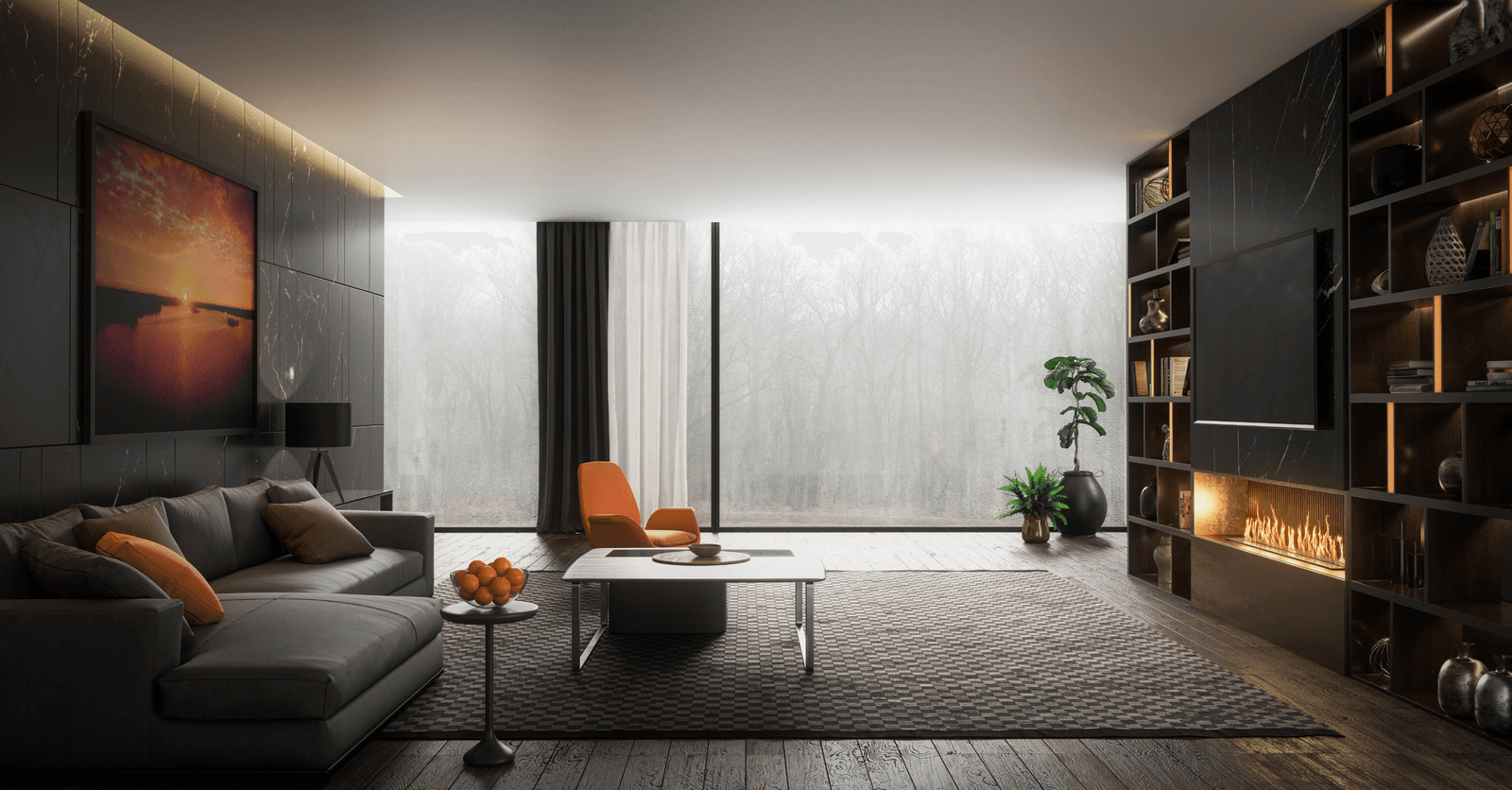
Source: Canva
To choose the right living room rug, you need to know where you want to place it. When selecting the ideal size and shape, it’s important to consider the size and layout of the furniture.
What Is the Rule on Rugs for Small Living Rooms?
Contrary to popular belief, a small living room can very much benefit from a large area rug. Often, the smaller the rug, the smaller the room looks.
Don’t overdo it, though! A too-big rug will overwhelm the room. To help guide you in your search, experts advise selecting a rug that’s no bigger than a quarter of the living room’s size.
Here are some ideas on rug placement in a small living room:
Is your living room rather narrow? Stick with rectangular rugs, ones that are slightly wider than your coffee table.
Is your decor a statement in and of itself? Only place your coffee table on the rug to avoid overloading the room.
To make the room feel bigger, position the furniture around the rug. Light shades and large patterns also contribute to that illusion of space you’re seeking.
Going big? Your rug should still be confined within the middle of the room where your sofa, armchairs, and coffee table are centred.
For a rather stylish and elegant look, make sure your rug sticks out on either side of your couch.
For a harmonious, trendy, and organic look, pair a round rug with equally shapely furniture.
Styling a Big Living Room with a Large Rug
Note that placing an area rug in a big room with over 430 square feet of space may be challenging.
Assuming this applies to you, use rugs to define distinct zones - lounge area, play area, dining area. Showcase featured items in each zone by choosing a size-appropriate rug.
The size of a rug must be proportional to that of the room. In a big living room, steer your decision-making toward 200 cm by 300 cm rugs, that is, if not bigger.
Here are some inspiring ideas for big living rooms:
Be bold and daring by using several rugs and overlaying them.
Use a rug as a base for all your furniture.
Opt for a bold rug with a unique shape or exclusive design. It’ll be the centrepiece around which to position your furniture.
Opt for a Colour and Shape That Matches the Living Room Decor

Source: Canva
Rectangular Rug or Irregularly Shaped Carpet
A round living room rug instills a welcoming, warm vibe. Its spherical shape breaks up the more sterile feel of the straight-lined furniture, perfectly suiting small living rooms.
Square area rugs, though discreet, make for an original touch. They suit both small and spacious living rooms but stun as oversized features, making for a striking effect. Also quite appropriate in an especially narrow room, restoring a certain equilibrium.
A rectangular area rug is timeless. It partitions the floor space in an open-concept living room beautifully. In a rectangular room, it highlights its size.
Hexagonal or irregularly shaped rugs add flair and versatility to a sort of stiff-looking living room furniture.
A few inspiring ideas…
Match the shape of a small rug with that of the coffee table, positioned in the middle of the room.
Create an asymmetrical and stylish effect by placing a round rug somewhere else than the middle of the room.
Choose a square rug to make the living room look more spacious.
A round or uniquely shaped rug can serve as a focal point when placed among furniture, but it shouldn't be partially hidden.
Add multiple round-shaped rugs, overlaying them to create a unique and sought-after touch.
Neutral Colours (White, Light Grey, or Black) or Dare Be Bold?
You can match your rug to the room’s overall style. However, if the rug has a certain centrepiece quality, it could be rather stunning in a contrasting shade. It’s all a matter of choice.
Neutral colours and earthy tones, such as beige, brown, taupe, greige, and glazed chestnut, blend with any decor and mesh perfectly with the furnishings.
A white carpet fits with all types of decor and even suits busily decorated rooms. It adds a softness and simplicity to the look.
A black rug lends a chic and elegant aesthetic. Since it can dim the room, large black carpets are typically suited to very bright and airy spaces.
A grey rug modernizes the space; it's a good idea to echo this colour by adding grey accessories throughout the room.
A brown, taupe, sandstone, or beige area rug adds a warm touch to the room. Said shades fit perfectly with wood or leather furniture, including warmed-hued sofas like red, prune, burgundy, or rust.
Bold colours, such as red, magenta, indigo blue, turquoise, and emerald green instantly add dynamism to dull-looking furniture and a lack-lustre room. It lends a certain flair, uniqueness, and glee.
A yellow rug brightens any room. By reflecting the sunlight, it adds light to any dark room. Paired with pink, the setting becomes very girly; paired with blue or purple, it veers toward a Mediterranean-like vibe.
A blue carpet lends a fresh touch. Over the last few years, it’s actually been the go-to colour trend. Aside from red and orange-tinted furnishings, it can be paired with all other shades.
A pink area rug adds a certain softness and femininity to a living room.
A red carpet is literally a fiery piece, instantly warming up a decor featuring mostly cool tones. To soften the theatrical look, it pairs really well with prune or pink hues.
Living Room Rug: Placement and Maintenance
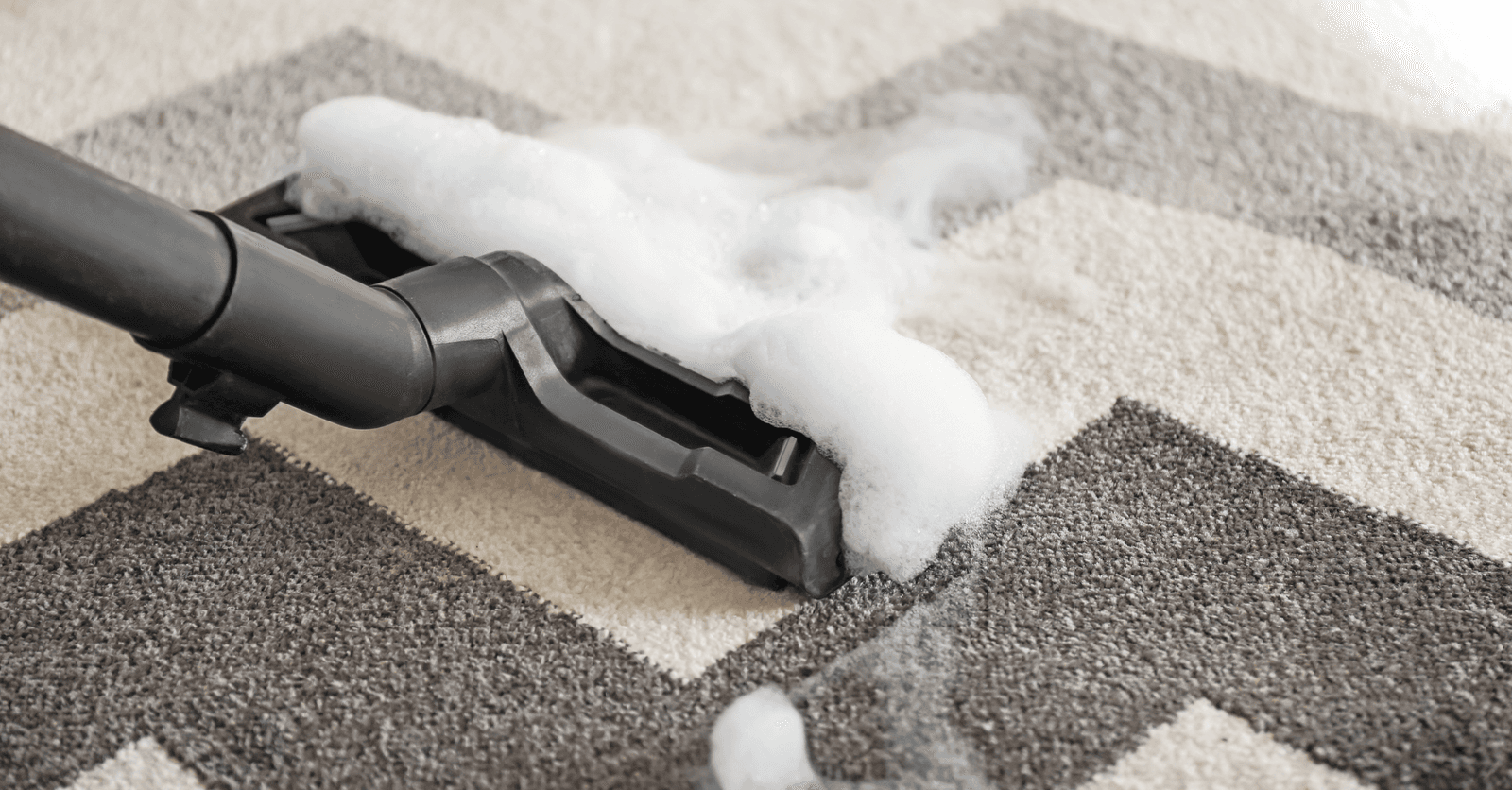
Source: Canva
Should a Rug Go Under or in Front of the Sofa?
A Rug Under Every Piece of Furniture
It makes for a cozy yet modern atmosphere, one in which comfort levels are optimal. One of the most appealing selling points of any rug or carpet is that it shields dwellers from cold floors.
Another upside? According to Mike Jones, the GM at Simply Underlay, "if pinned down by furniture, it won’t ever shift. You won’t be lifting the edges every time you move an armchair." Plus, this setup helps clearly define the living area in an open space
This option is ideal for a large living room, an open floor plan, or a room with more than one sofa. For optimal impact, the rug should stick out by at least 30 cm beyond the edges of the furniture.
A Rug Partially Tucked Under Furniture Legs
Arrange your furniture so that only the front legs are on the rug. This setup works well in small living rooms or when shopping with more a limited budget. The only exception, for both comfort and safety, is that chairs should never be positioned half on and half off between the flooring and the rug.
Styling a Small Living Room: Area Carpets Under Coffee Tables
The third option is to place a rug solely under the coffee table.
While it may not create the coziest look, it adds colour, sophistication, or flair on a budget.
Keep the furniture legs off the rug to make the room appear more spacious.
How to Wash or Clean Floor Rugs

Source: Canva
Living rooms are ever-populated, so it’s important to choose a rug that’s not only resilient and durable but also easy to maintain. Ask the sales representative for advice before purchasing.
To ensure your rug or carpet retains its appeal over the years, don’t overlook upkeep. A faded, low-quality, and poorly maintained rug is highly noticeable, wreaking havoc on the space’s overall appeal.
Below is a list of our top rug maintenance tips:
Clean rug stains using a mixture of liquid dish soap and white vinegar: poor vinegar on a rag and scrub the stain. Let it sit for 15 minutes. With a scrub brush, clean with water-diluted dish soap, then rinse.
Vacuum regularly, that is, more than once a week.
Use sparkling water and baking soda to revamp your rug’s colouring.
Clean your rug with a steam cleaner once a month to avoid having to use carpet fibre-damaging cleaners.
If the rug in question is small, get it dry-cleaned.
For recent stains, dish soap often suffices.
To prevent early wear and tear, rotate your rug regularly to avoid marking the fibres permanently with heavy furniture.
Before throwing a small rug into the wash, check the tag to make sure it's machine washable.
Finding the Perfect Living Room Rug: The Art of Comfort and Elegance
Choosing a living room rug is an important interior decoration decision. Several factors, such as size, style, colours, and material, must be considered to ensure a harmonious fit within the space. Selecting a suitable rug not only enhances your living room’s aesthetic but also adds a touch of comfort and warmth to your space. It’s essential to take into account your lifestyle, rug maintenance routine, and budget to make a methodical decision.
FAQ About Living Room Rugs
Which type of rug is best for a living room?
Here are the typical rug sizes available in stores:
Small living room rugs: 60 cm × 110 cm, 80 cm × 150 cm, 120 cm × 170 cm, 140 cm × 200 cm, 160 cm × 230 cm
Medium-sized living room rugs: 170 cm × 240 cm
Large living room rugs: 200 cm × 290 cm and bigger.
To gauge the right rug size, take accurate measurements of the room and furniture. Measure the space you’d like the rug to cover and consider how you’ll set up your furniture around it.
What rug colour can help make a room look bigger?
To make a room look bigger, choosing a light-coloured rug is best, especially one hinting toward beige, light grey, or off-white. Neutral, bright tones reflect light better, creating the illusion of space. A rug with subtle patterns or fine-drawn stripes can also help visually extend the room. Avoid dark colours, as they tend to visually cramp spaces.
Looking for something else?
Related articles
The latest industry news, interviews, technologies, and resources.

Amanda Harvey
•07 Nov 2023
Industrial style is excellent for the homeowner who is looking for a concept that lacks any sort of pretentiousness. The visual appeal and charm of industrial style lie in its ability to showcase utilitarian surfaces, stripped-back architecture and salvaged objects. If you’re looking to celebrate humble materials, then this is the home decor option worth considering!

Editorial Team
•07 Nov 2023
Albeit the bathroom is almost always the smallest room in a home, it isn’t any less important. With a bit of creativity and strategically devised tips, a small bathroom can be both functional and aesthetic. In this article, we’ll delve into the five decoration tips that can help you use the space in your small bathroom to your advantage without compromising comfort or design. These tips can help you design a practical and elegant bathroom. So, get ready to transform your small bathroom into a genuine interior décor masterpiece!

Editorial Team
•04 Sep 2024
As more of us shift to working from home, managing our energy consumption has become crucial. Not only does it help in reducing our monthly bills, but it also plays a significant role in lessening our environmental impact.
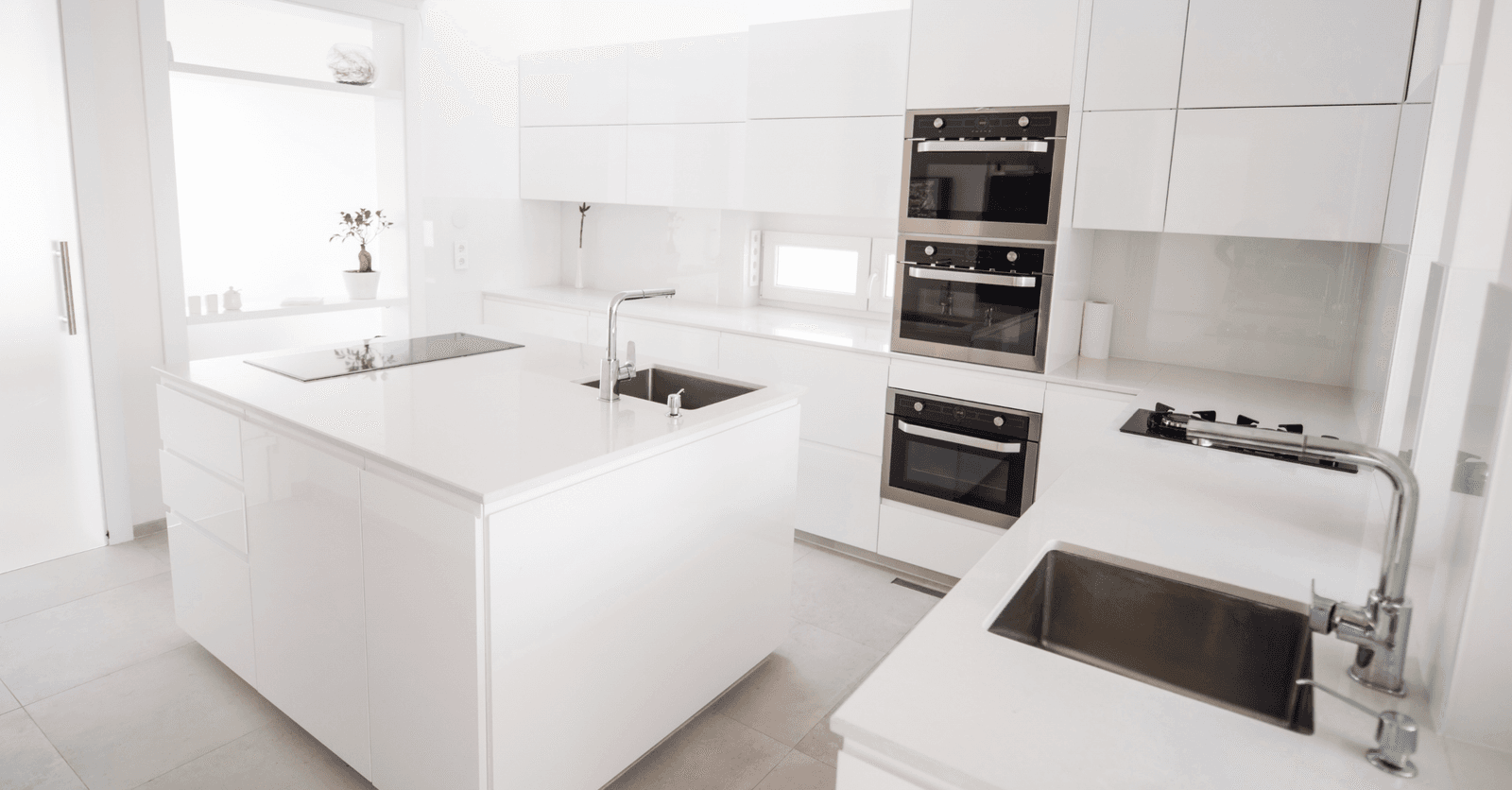
Editorial Team
•07 Nov 2023
Have white kitchens gone out of style? While it is true that the trend has been somewhat overrated and overused in recent years, it would be an exaggeration to go so far as to say that they’re completely outdated.
Paul Riopel
•09 May 2024
In Quebec, the beautiful season only lasts for a moment. Some summers are rainy, some springs late, some autumns chilly. Adding a permanent awning extends this blissful period when we enjoy the outdoor space.